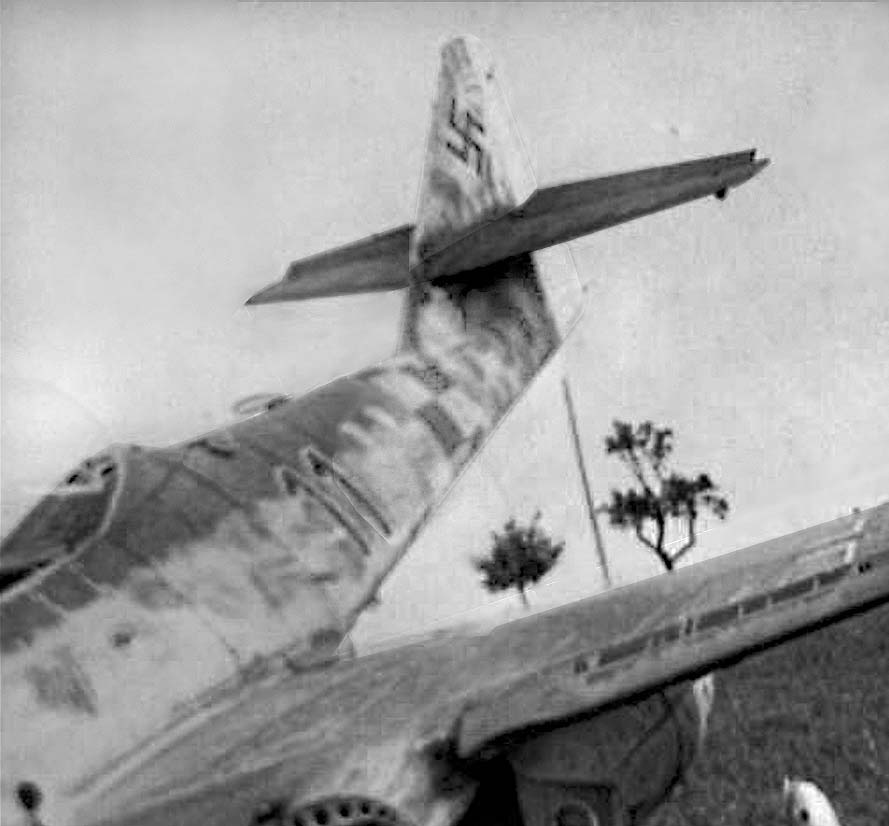|
This Me 262 A-1a with
the W.Nr 111901 was from I./KG(J) 54 and its 2. Staffel. It was
coded "Black 11" that was outlined in white, had the
unit's blue and white tailband, and a white and black "Totenkopf"
crest. This machine flew with its unit until the end of the war
when it was found in a derelict state. Its nose is not visible,
but I should think it was painted red with a white outline.
Some reserachers had
noticed on the original photo that the white portions of its
Karoband and the fuselage Balkenkreuz are slightly darker that
the white outline of the number "11". something that
points to a deliberate attempt to 'tone-down' the contrast between
the dark blue and white squares that aided in ground concealment.
However it is clear (se
the refined photo below) that on the original photo there is
a dark spot on the negtive, a spot that draken the rear fuselage
including the Blue and White fuselage band and the fuselage cross.
There are only three KG(J) units that wore karobands in their
designated colours:
- KG(J) 6 red / black (Me 262As & Bf 109Gs)
- KG(J) 27 green / white (Fw 190As & Bf 109 Gs)
- KG(J) 54 blue / white (Me 262 As & Bf 109 Gs)
Note that there were several variations in the karoband styles,
but the colours were always that same. There are NO other colour
combinations. Tom Hitchcock in the late 1970s thought that the
tailband of the well-known and photographed Me 262 A-1a "Yellow
5", WNr.501232 of 9./III./KG(J) 54 was blue and green, and,
that it was associated with an ISS unit. Since then, photographic,
narrative and documentation evidence confirms the above unit
and colour associations for KG(J) units, and in "Yellow
5's" case was red and black as expected with a KG(J) 6 machine.
Therefore, the black and light blue colour combination has no
match in any known KG(J) units.
Also, there is a very interesting link back to the tailband colours
of three Jagdgeschwader units:
- JG 6 = red/white/red > (KG(J) 6 = red/white
- JG 27 = green > KG(J) 27 = green/white
- JG 54 = blue > KG(J) 54 = blue white
This cannot be a coincidence. Furthermore, there was a need to
distinguish the units so instead of tailbands with vertical bands
the KG(J) units used squares (chequers or 'karos') of alternating
colours.
Written in
cooperation with the well know researcher and expert David E.
Brown
This is one
of 130 profiles that is to be include in the future Profile Book
No 13
|


%2054.jpg)
